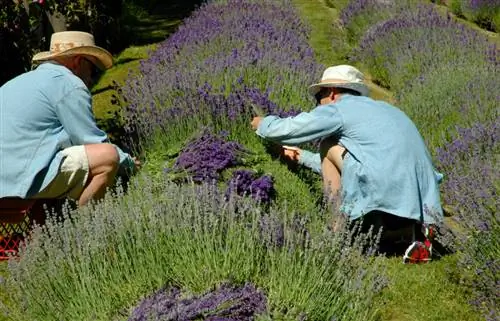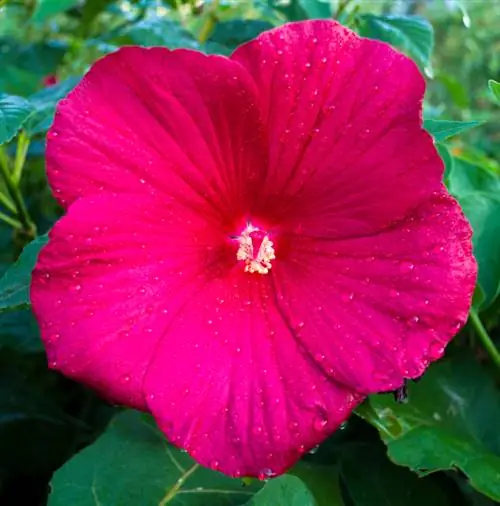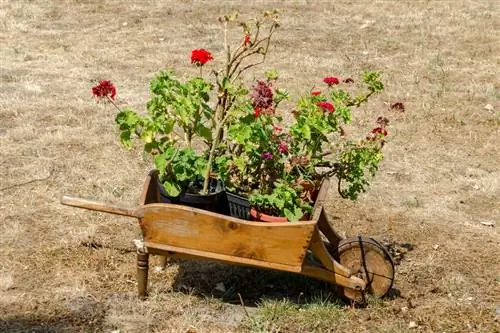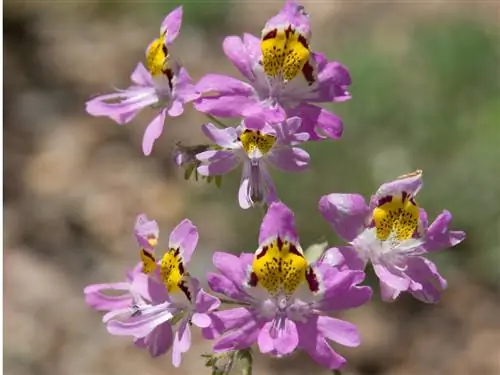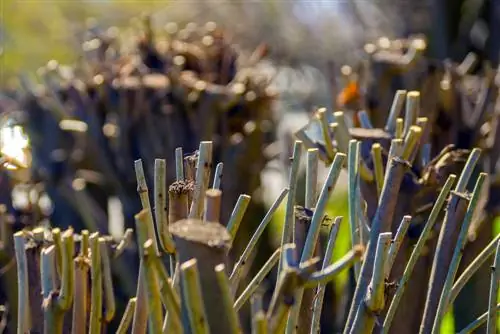- Author admin [email protected].
- Public 2023-12-16 16:46.
- Last modified 2025-06-01 06:02.
Lavender is generally considered a fairly easy-care plant. However, that doesn't mean you can leave the fast-growing plant to fend for itself. Above all, the Mediterranean plant needs regular pruning, otherwise it will become heavily woody and bald.
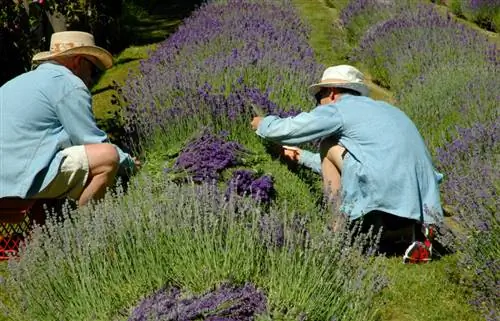
When is the right time to cut lavender?
Lavender should be cut back in early spring, ideally in March or April, to prevent woodiness and baldness. Spent flower heads can be removed in July or August to encourage a second period of flowering.
Why do you have to cut back lavender?
Botanically speaking, lavender is a subshrub. As such, the vigorously growing plant - many lavender varieties can grow up to a meter high and just as wide - tends to become woody from below as it gets older. Where the lavender has already become woody, neither new leaves nor flowers grow. In gardening terms, this phenomenon is known as “balding”. With good care, lavender bushes can live for at least 10, sometimes even 20 to 30 years - and then look very bare if left unpruned. Only regular pruning prevents the lavender from doing so and ensures that it sprouts new shoots and flowers every year.
It's all about the right time
In Germany, trees and bushes are usually pruned in autumn. However, autumn pruning is fatal for the sensitive lavender, as it robs it of the strength to overwinter. The faded inflorescences in particular offer the plant a certain degree of protection from the cold. It is better to cut the lavender in early spring, before the first new shoots appear. As soon as the plant starts to bloom again - which can be the case with lavender as early as May - it is already too late to prune. Therefore, you should cut back your lavender in March or April at the latest, weather permitting. A warmer period without frost but with lots of sun is ideal.
Cutting faded flowers?
If you cut back the spent inflorescences in July, but at the latest in early to mid-August, you will encourage your lavender to bloom a second time. However, if possible, you should not cut later, otherwise the plant will not be able to mature - and will most likely die in winter.
Cut lavender correctly
When cutting the lavender, you should definitely pay attention to the following points:
- Cut with a sharp and clean tool, preferably hedge or rose shears (€14.00 on Amazon).
- Crop the entire bush by at least half.
- However, do not cut into the old wood under any circumstances, otherwise the lavender will no longer sprout.
- You should also leave a few centimeters of “green wood” - i.e. young shoots - on so that the bush can sprout again.
Can you rejuvenate woody lavender?
Rejuvenating heavily woody lavender is a difficult undertaking. Bushes that have been heavily pruned usually do not survive such a measure, because lavender only very rarely sprouts again from the old wood. Even dividing very old plants is usually not possible due to the heavy woodiness. It is better to propagate the plant with cuttings instead and start over. This time, however, you should pay attention to regular topiary.
Tips & Tricks
Lavender can often be grown wonderfully as a tree, although regular and correct pruning is all the more important in this case.

